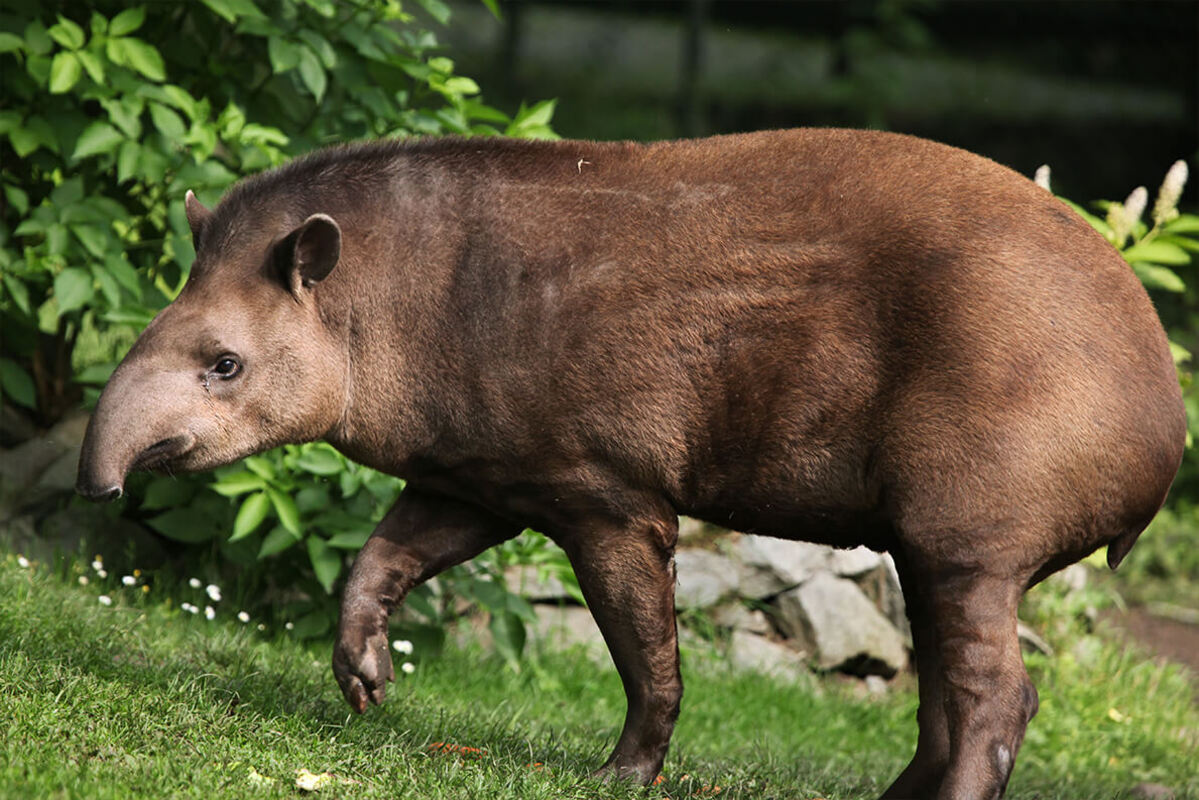Tapirs are extraordinary mammals that fascinate with their appearance and way of life. They inhabit the tropical forests of South and Central America as well as Southeast Asia. Despite their ancient origin, tapirs remain relatively unknown to the general public, although they possess a range of remarkable traits. These animals play an important role in ecosystems, dispersing plant seeds and helping to preserve biodiversity. Below are fascinating facts about these unique creatures.
- Tapirs belong to a very ancient group of mammals and have existed on Earth for more than 20 million years. They are related to horses and rhinoceroses, even though they look completely different. This relationship is explained by a shared evolutionary ancestry. Their body structure has preserved characteristics of ancient mammals.
- There are four living species of tapirs in the world, while a fifth species became extinct in prehistoric times. Three species live in the Americas and one in Southeast Asia. The most recognizable is the Malayan tapir with its distinctive black-and-white coloration. The other species have brown or gray coats.
- Tapirs possess a short trunk formed by elongated nasal bones and a flexible upper lip. This organ helps them grasp leaves, fruits, and branches. They can even submerge it in water to drink. The trunk makes tapirs resemble miniature elephants.
- Despite their heavy build, tapirs are excellent swimmers. They spend much time in the water, cooling off and hiding from predators. Aquatic plants are also part of their diet. This lifestyle makes them semi-aquatic residents of tropical forests.
- Tapirs are mainly nocturnal animals. During the day they rest in dense vegetation, and at night they search for food. This rhythm helps them avoid predators. It also makes them less visible to humans.
- Young tapirs have a special coat pattern. Their bodies are covered with light stripes and spots resembling a watermelon pattern. This camouflage helps them hide among grass and leaves. As they grow, the pattern fades and they acquire adult coloration.
- An adult tapir can weigh up to 300 kilograms, with a body length of more than two meters. Despite their size, they can run at speeds of up to 40 kilometers per hour. This ability helps them escape danger. When threatened, they can also dive and remain underwater for several minutes.
- In the wild tapirs live solitary lives. They meet only during mating season or when a female is caring for her young. This solitary behavior makes them difficult to observe in nature. However, they leave recognizable trails in the forest.
- Tapirs have poor eyesight but compensate with excellent hearing and smell. Their ears detect even the faintest sounds, and their sense of smell helps them find food at night. These abilities allow them to navigate their environment confidently. Such adaptations are vital for survival.
- Predators of tapirs include jaguars, tigers, and crocodiles. They mostly target young or weakened individuals. Adult tapirs can defend themselves with strong jaws and powerful kicks. This sometimes allows them to repel attackers.
- Tapirs are essential for ecosystems. By eating fruits and passing seeds through their digestive system, they aid plant reproduction. Thanks to them, tropical forests maintain their diversity. They are often called the gardeners of the jungle.
- The average lifespan of tapirs in the wild is around 25 years, and in captivity they can live even longer. In zoos they adapt relatively well. Scientists study them intensively to better understand their biology and behavior. Such research supports conservation programs.
- Many species of tapirs are endangered. The main threats are deforestation of tropical forests and poaching. People hunt them for their meat and skin. For this reason international organizations have listed tapirs as endangered species.
- In the culture of some South American peoples tapirs were considered sacred animals. Their image often appeared in myths and legends. For many tribes they symbolized strength and endurance. This highlights their significance in indigenous traditions.
- Tapirs are capable of producing a variety of sounds. They whistle, growl, and even emit neigh-like calls to communicate. Young tapirs often vocalize to attract their mother’s attention. Such communication helps them survive in the wild.
Tapirs are remarkable creatures that combine traits of ancient mammals with unique adaptations to life in the jungle. They play an important role in preserving nature and are true symbols of tropical forests. These interesting facts show that even little-known animals can be key to understanding harmony in the natural world. You might not know that tapirs are among the oldest and most mysterious mammals on our planet.





